#grand duchess catherine mikhailovna
Text

A beautiful drawing showing Grand Duchesses Catherine (Ekaterina) Mikhailovna and Maria Mikhailovna c. 1837.
#grand duchess maria mikhailovna#maria mikhailovna#catherine mikhailovna#ekaterina mikhailovna#grand duchess catherine mikhailovna#1830s#19th century#historical fashion#circa 1837#royal portrait#old fashion#drawing#mikhailovichi#romanov#romanovs
26 notes
·
View notes
Text


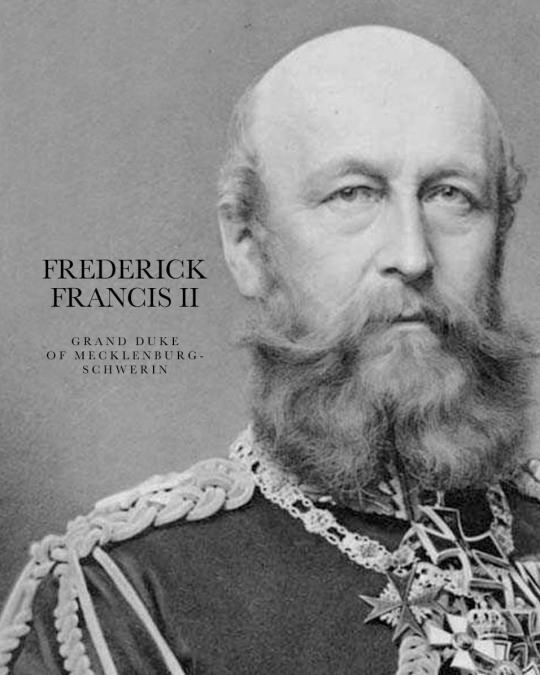
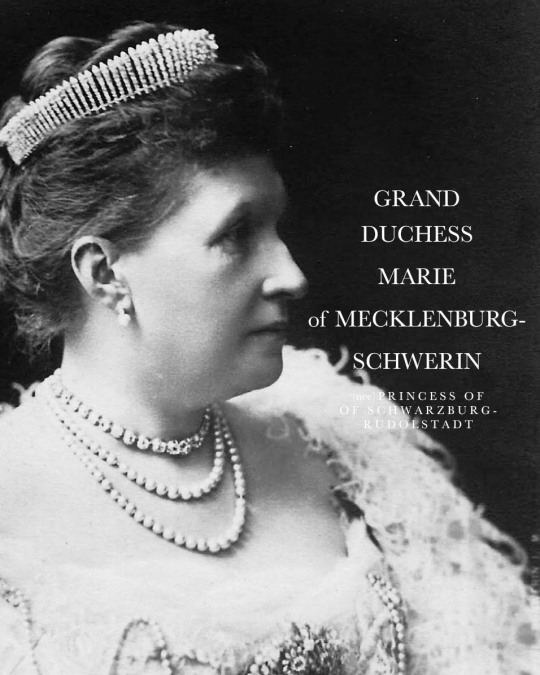
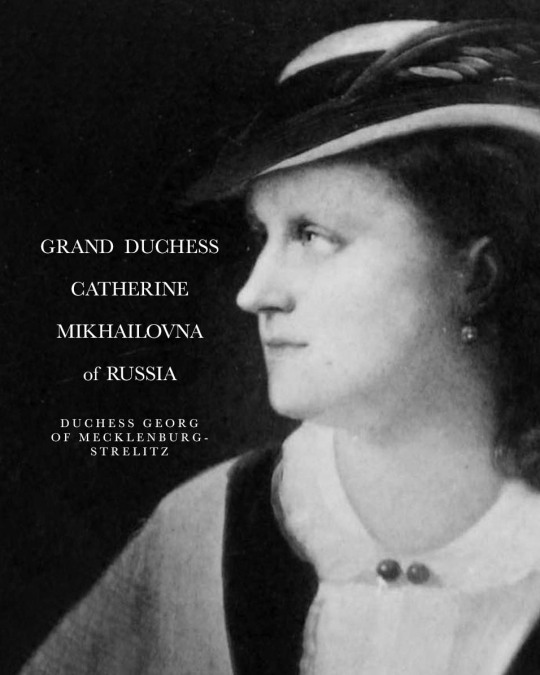
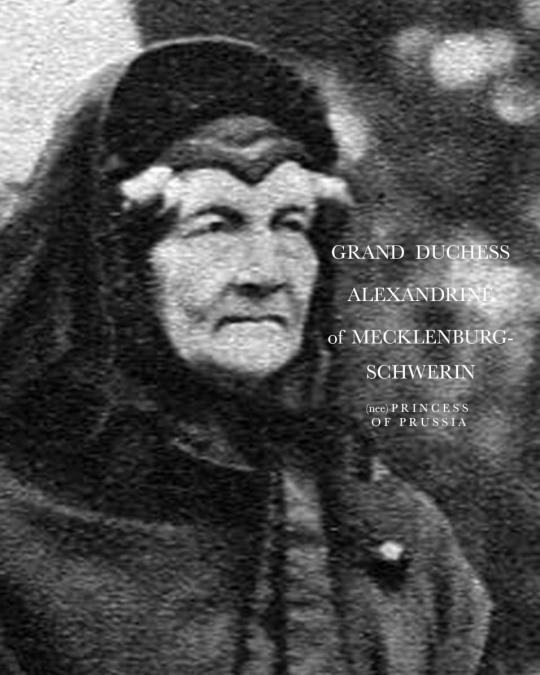
GODPARENTS OF GRAND DUCHESS ELENA VLADIMIROVNA
Grand Duchess Elena Vladimirovna, the youngest child and only daughter of Grand Duke Vladimir Alexandrovich of Russia and his German-born wife Grand Duchess Maria Pavlova (née Duchess of Mecklenburg-Schwerin), was born on 29 January (O.S. 17) 1882 in Saint Petersburg. She was christened on 12 March in the Grand Palace Church of Catherine Palace, Tsarskoe Selo. Her godparents were:
ALEXANDER III, EMPEROR OF RUSSIA - her paternal uncle, who had succeeded the Russian throne just a year prior, was named as one of her godparents. He was highly reactionary in domestic affairs and reversed some of the liberal reforms of his father, Alexander II. He was present at his niece's christening.
FREDERICK FRANCIS II, GRAND DUKE OF MECKLENBURG-SCHWERIN - her maternal grandfather was another of her godparents. A Romanov by descent (being a great-grandson of Tsar Paul), he held the rank of Prussian general and was also a Russian General Field Marshal.
MARIE, GRAND DUCHESS CONSORT OF MECKLENBURG-SCHWERIN - her step-grandmother was also named as her godparent. The third wife of Frederick Francis II, whose marriage produced four children, including Prince Hendrik, consort of Queen Wilhelmina of the Netherlands and father of Queen Juliana.
GRAND DUCHESS CATHERINE MIKHAILOVNA OF RUSSIA - A first cousin of her grandfather, Catherine was one of the two godparents present at her christening. She was the wife of Duke Georg August of Mecklenburg-Strelitz, and a great philanthropist and many of the organisations she supported and helped to create still operate today.
ALEXANDRINE, GRAND DUCHESS OF MECKLENBURG-SCHWERIN - her maternal great-grandmother, a Prussian-born princess was also her godparent. She was a sister of Empress Alexandra Feodorovna-consort of Nicholas I-who was Elena's great-grandmother on her father’s side. In 1822, she married Paul Frederick, Hereditary Grand Duke of Mecklenburg-Schwerin (himself, a grandson of Russian Tsar Paul). Their marriage was generally considered unhappy, he was a military man who had little time for or interest in his wife and family. Alexandrine, by contrast, was a devoted mother who tenderly raised her children and actively cultivated their cultural pursuits.
Source
21 notes
·
View notes
Note
hi! So I was just rewatching the movie Romanovs an Imperial Family and I noticed that at Tobolsk they (the guards) took pictures of the family (front and side profiles) and I was also just watching Nicholas and Alexandra (1971) and I noticed that they also took pictures at Tobolsk. Did this happen in real life or is it just a myth? (If it’s a myth you can put it on the list for your series :)
Thank you!
Hi! Thank you so much for your question lovely! It made me dig a lot deeper into whether this was actually true and I am pleased to say that it isn't a myth, but something that actually happened. Here are some details!
Pierre Gilliard's diary mentions the family having to have identification photos taken. On 17 September 1917 he wrote that "ID cards with numbers, equipped with photographs" were taken of the family. According to Paul Gilbert, who runs the Nicholas II website and has a great article about this, Alix also wrote about this in her diary.
Pierre Gilliard also wrote about this in his memoir Thirteen Years at the Russian Court, Page 286:
In September Commissary Pankratof arrived at Tobolsk, having been sent by Kerensky. He was accompanied by his deputy, Nikolsky—like himself, an old political exile. Pankratof was quite a well-informed man, of gentle character, the typical enlightened fanatic. He made a good impression on the Czar and subsequently became attached to the children. But Nikolsky was a low type, whose conduct was most brutal. Narrow and stubborn, he applied his whole mind to the daily invention of fresh annoyances. Immediately after his arrival he demanded of Colonel Kobylinsky that we should be forced to have our photographs taken. When the latter objected that this was superfluous, since all the soldiers knew us—they were the same as had guarded us at Tsarskoie-Selo—he replied: " It was forced on us in the old days, now it's their turn." It had to be done, and henceforward we had to carry our identity cards with a photograph and identity number."
It's worth mentioning that all the staff that worked at the palace before the Revolution did indeed have to carry ID passes with photographs.
We have a brilliant example of what one of these passes in Tobolsk might have looked like in the form of passes for Botkin and Demidova, which are now Museum of the Family of Emperor Nicholas II in Tobolsk. I sadly couldn't find Demidova's, so have just attached Botkin's.

Captioned: 'Identity card (pass) E. S. Botkin for the right to enter the house number 1 (“Freedom House”) dated November 6, 1917.'
Which brings me on to a lady named Maria Mikhailovna Ussakovskaya. For clarification, I don't know if she was the person who took the photos for definite, but she was a prominent photographer in the area and could have been hired to take the photos. She did 100% have some connection to the Romanov family, as I'll explain later.
Maria was a photographer in Tobolsk, in fact she was the first woman photographer from the region that operated professionally, and she had her own salon. She even photographed Rasputin - you can see her surname embossed on the cabinet card here, reading Уссаковская

She photographed the family's entourage, too, as the staff were able to move freely about Tobolsk. Shown here are (left-right): Catherine 'Trina' Schneider, Count Ilya Tatishchev, Pierre Gilliard, Countess Anastasia 'Nastenka' Hendrikova, and Prince Vasily Dolgorukov. Note Maria's surname embossed again onto the card, showing it was taken and produced at her salon.

Invoices for the family show that the Romanovs had several payments sent to Ussakovskaya for postcards and "correcting negatives", so we know that there definitely was a relationship between the two parties. She took photos of the exterior of the house in Tobolsk, and postcards were sent by the Grand Duchesses showing the house, so they might have used her photos.

Letter sent from Maria to Nikolai Demenkov, her 'crush'
Which then begs the question of what happened to these ID photos...
Apparently, Maria Ussakovskaya's daughter Nina owned some photographic plates of the Romanov family. It's not explained whether these were casual photos taken of the family, or ID photos, but according to Paul Gilbert "in 1938... fearing arrest, [Nina] destroyed all the photographic plates".
Owning any Romanov or Tsarist related items, including photographs and postcards, was an arrestable offence. The rise of the gulags in the 1930s with the Stalinist regime probably prompted Nina to destroy what she owned.
Personally, I don't have much hope that any of the photos of the family will ever turn up. But there is always a small chance, I suppose :)
To conclude: yes, this happened, photos were definitely taken of the family for identification passes. Pierre Gilliard is a trustworthy source and the fact that it was written in his diary and also Alix's diary is pretty much concrete evidence. The existence of Maria Ussakovskaya and her association with the family also points towards this, alongside the bills and invoices sent to the family at Freedom House.
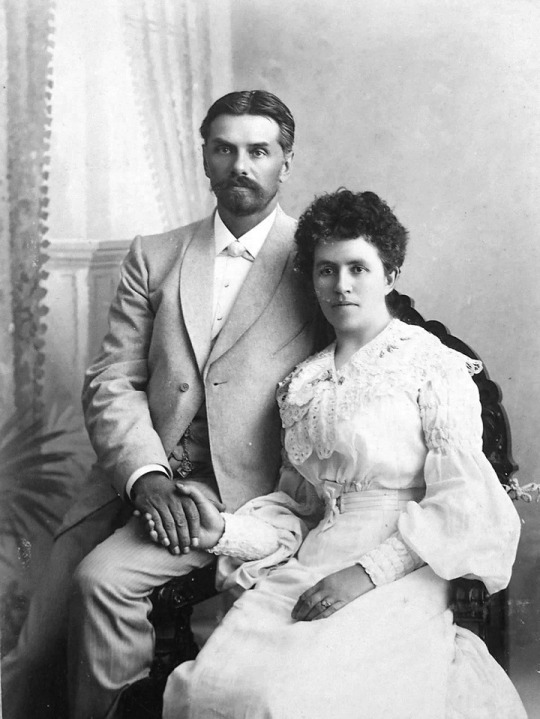
Maria with her husband, Ivan.
SOURCES:
The woman who photographed the Imperial Family in Tobolsk by Paul Gilbert
Thirteen Years at the Russian Court by Pierre Gilliard
#q#ask#answered#OTMA#Romanovs#Romanov family#Tobolsk#Freedom House#Exile#Captivity#Eugene Botkin#Evgeny Botkin#Anna Demidova#Pierre Gilliard#Alexandra Feodorovna#Maria Nikolaevna#sources#Thirteen Years at the Russian Court#my own
18 notes
·
View notes
Photo

Grand Duchess Catherine Mikhailovna of Russia, Duchess George Augustus of Mecklenburg-Schwerin (28 August 1827 - 12 May 1894)
#catherine mikhailovna romanova#grand duchess catherine mikhailovna#grand duchess of russia#duchess george augustus of mecklenburg-schwerin#daughter of grand duke michael pavlovich of russia#wife of duke george augustus of mecklenburg-schwerin#history#women in history#19th century#art
8 notes
·
View notes
Text

Duchess Helene of Mecklenburg-Strelitz, 1860s.
She was the daughter of Duke Georg August of Mecklenburg-Strelitz and his wife, Grand Duchess Catherine Mikhailovna of Russia.
13 notes
·
View notes
Photo

Grand Duchess Catherine Mikhailovna of Russia (28 August 1827 – 12 May 1894), was the third of five daughters of Grand Duke Michael Pavlovich of Russia and Princess Charlotte of Württemberg (known as Grand Duchess Elena Pavlovna after marriage). She was also the wife of Duke Georg August of Mecklenburg-Strelitz.
She was a great philanthropist and many of the organisations she supported and helped to create still operate today.
1 note
·
View note
Text
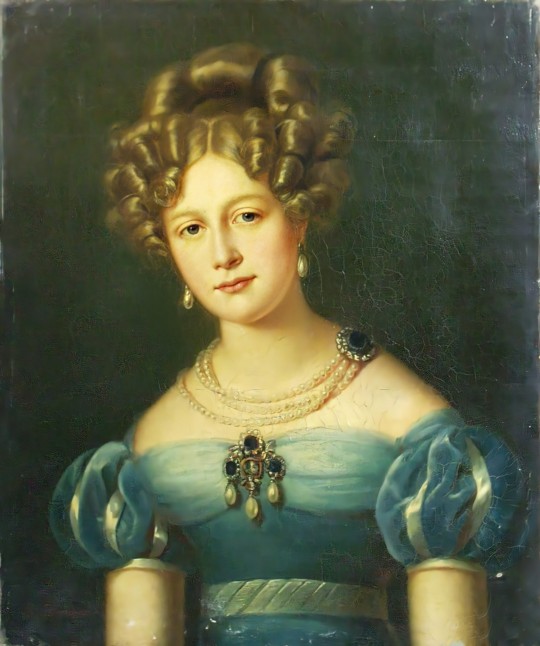
Born on this day in Romanov History: January 9th, 1807 Grand Duchess Elena Pavlovna
Born Princess Charlotte of Wüttemberg, she was the eldest child of Prince Paul of Wüttemberg and Princess Charlotte of Saxe-Hildburghausen. She spent her childhood with her father and sisters in Paris and while her home and upbringing were quite modest by royal standards of the day, she was able to study under several Paris intellectuals, giving her a great education for the time. In 1822 she became engaged to her first cousin once removed, Grand Duke Michael Pavlovich of Russia (youngest child of Emperor Pavel I and Maria Feodorovna). Despite being only 15, Charlotte was considered to be an exceptional girl, highly intelligent, mature and a great beauty for her age. Charlotte converted from the Lutheran Church to the Orthodox Church, taking her new name of Elena Pavlovna on December 17, 1823. Only 2 months later, on February 20th, 1824, Elena and Michael were married and settled into the Mikhailovsky Palace where they lived until the death of Elena's mother-in-law who gifted the couple the Pavlovsk Palace. The marriage was not a happy one as Michael constantly neglected his wife for his true passion- the army. Despite the unhappy marriage the couple had 5 daughters: Grand Duchess Maria Mikhailovna (1825-1846), Grand Duchess Elizabeth Mikhailovna (1826-1845), Grand Duchess Catherine Mikhailovna (1827-1894), Grand Duchess Alexandra Mikhailovna (1831-1832), and Grand Duchess Anna Mikhailovna (1834-1836). Elena was close to her brother-in-law Emperor Alexander I and his wife, Empress Elizabeth Alexeievna and was quick to befriend the shy and timid Maria Alexandrovna (wife of the future Alexander II) when she first joined the family. Elena was considered the "family intellectual" and was viewed as the most exceptional woman in the family since Catherine the Great. Elena became a great patron of the arts, especially after the death of her husband in 1849, she was a patroness of composer Anton Rubenstein and commissioned his first 3 operas. She founded the Russian Musical Society, the St. Petersburg Conservatoire as well as a group of nursing sisters which would become the basis of the Red Cross in Russia. Elena was a huge opponent of Serfdom and helped push her nephew, Emperor Alexander II, to finally abolish Serfdom in 1861. Elena died on January 21, 1873 at the age of 66 after suffering from erysipelatous inflammation of the scalp for years and dying after a sudden decrease of cardiac activity. Elena was buried in the Imperial tomb in the Peter and Paul Cathedral next to her husband, Michael, and daughters, Alexandra and Anna.
Image is of Grand Duchess Elena Pavlovna, nee Princess Frederick Charlotte Maria Wüttemberg, wife of Grand Duke Mikhail Pavlovich, 1824 by Sophie Sheradam
#Grand Duchess Elena Pavlovna#Elena Pavlovna#Princess Charlotte of Wüttemberg#Romanov Birthdays#jan 9#1807#russian empire#house of romanov#romanov family#romanov dynasty#russian imperial family#imperial russia#russian history
4 notes
·
View notes
Photo
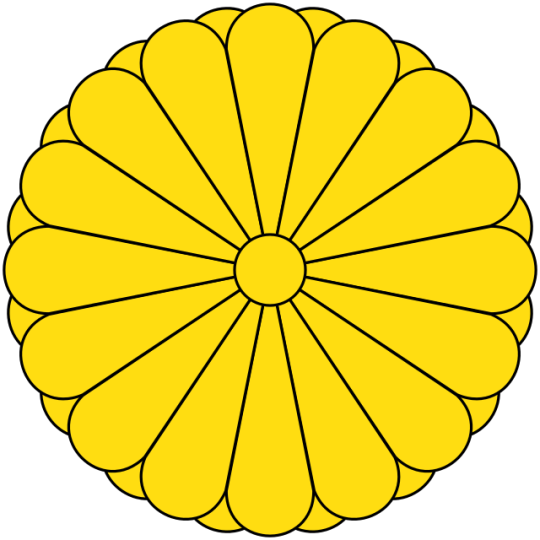
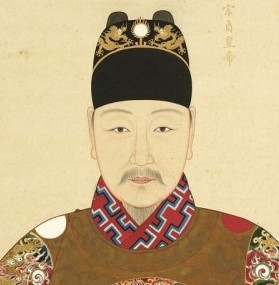
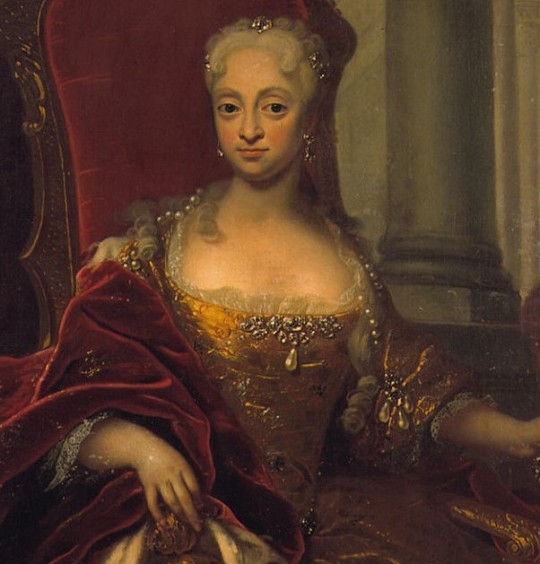
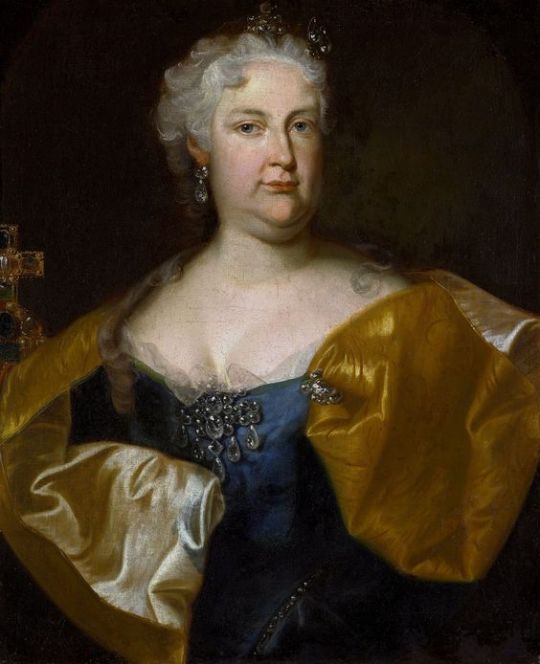
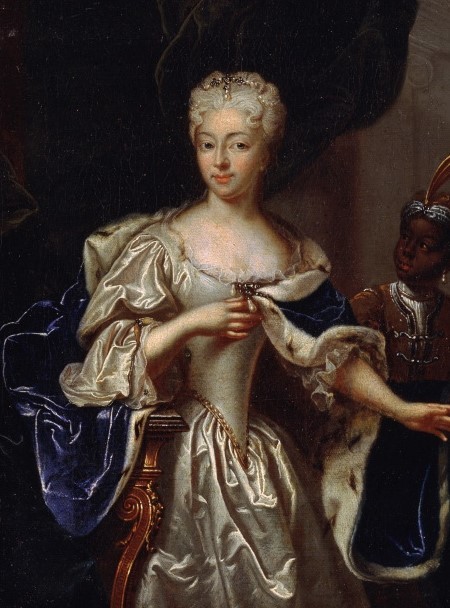
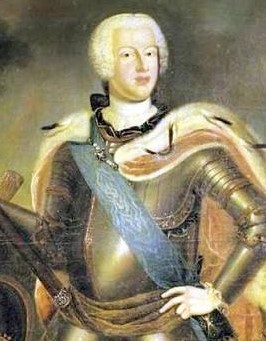


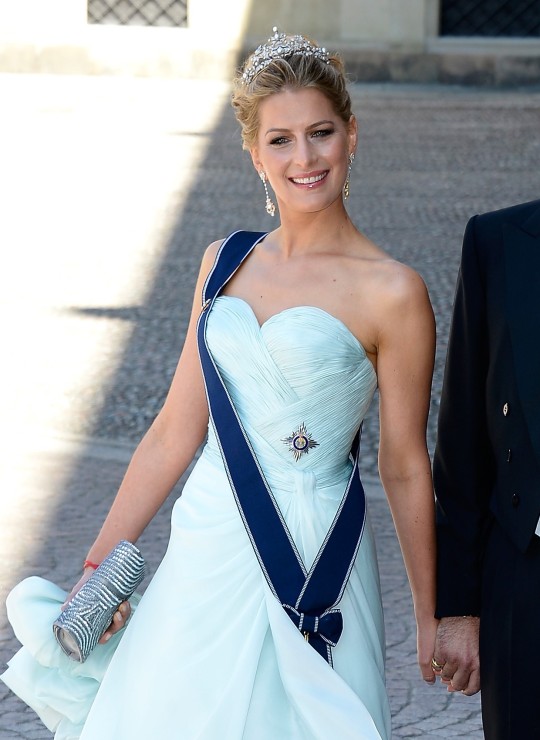

Royal Birthdays for today, August 28th:
Go-Reizei, Emperor of Japan, 1025
Taichang Emperor, Emperor of China, 1582
Louise of Mecklenburg-Güstrow, Queen of Denmark and Norway, 1667
Elisabeth Christine of Brunswick-Wolfenbüttel, Holy Roman Empress, 1691
Charlotte Christine of Brunswick-Lüneburg, Russian Grand Duchess, 1694
Anthony Ulrich, Duke of of Brunswick-Wolfenbüttel, 1701
Stéphanie de Beauharnais, Grand Duchess of Baden, 1789
Catherine Mikhailovna, Russian Grand Duchess, 1827
Tatiana, Princess of Greece and Denmark, 1980
Nikolai of Denmark, Count of Monpezat, 1999
#prince nikolai#princess tatiana#catherine mikhailovna#stephanie de beauharnais#Elisabeth Christine of Brunswick-Wolfenbüttel#Charlotte Christine of Brunswick-Lüneburg#duke anthony ulrich#Louise of Mecklenburg-Güstrow#Taichang Emperor#emperor Go-Reizei#long live the queue#royal birthdays
38 notes
·
View notes
Photo


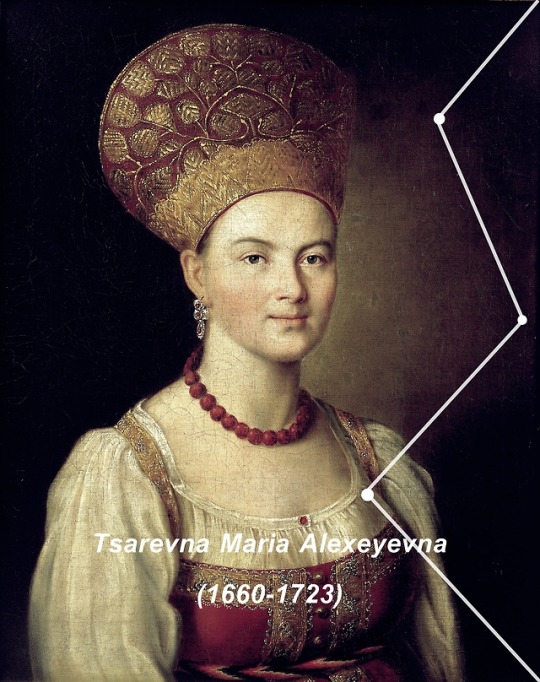

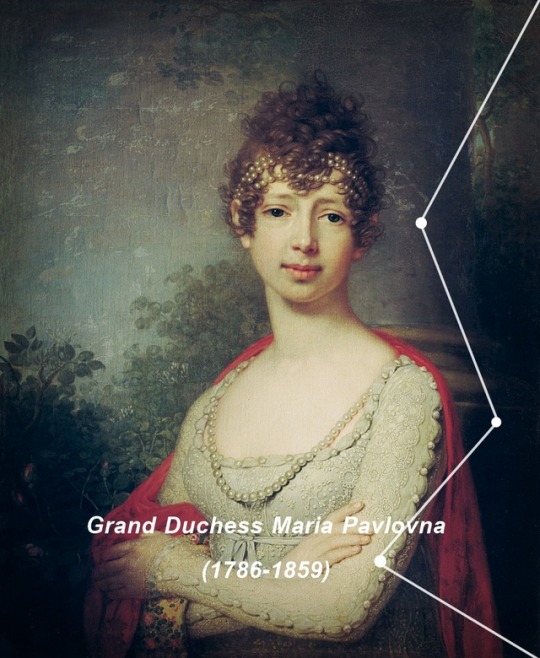
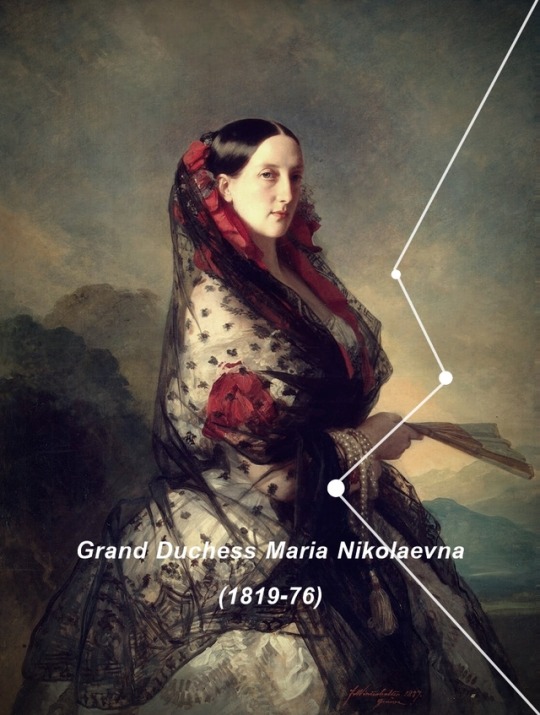
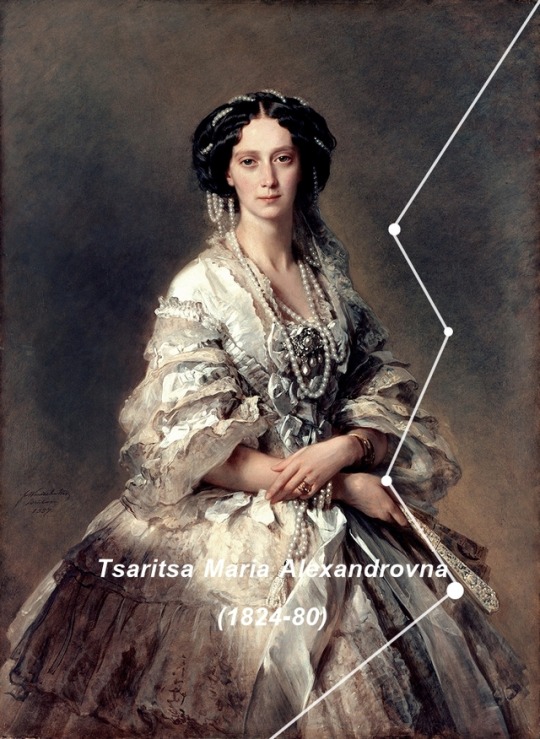


ROMANOV NAMES: Maria (part one)
Maria (rus.Мария) - a given name from derived from the Hebrew Miryām, which means “sea of sorrow “ or “wished for child”
Maria Miloslavskaya, the first spouse of Tsar Alexey, was the first woman from Romanov family to be called by name Maria at the same time.
Tsaritsa Maria Ilyinichna Miloslavskaya was born in 1625 as younger daughter of Russian boyar and diplomat, Ilya Danilovich Miloslavsky. Passed over, in first bride selection in favour of Euphemia Fedorovna Vsevolozhskaya, she was chosen by young Tsar Alexey few months later as his bride. It’s likely that behind Alexey’s choice stood Boris Morozov, an influental boyar and tutor to Tsar, who hoped to marry Maria’s sister and become his brother-in-law. Both couples were wedded on 16 January 1648 and new Tsaritsa conceived soon after that. Alexey and Maria produced 13 children in general, but 5 of them didn’t survived into adulthood. Maria fulfilled her duty in regard to religion and charity. She engaged herself in public dotations for poor and disabled children and benefited some monasteries. Unfortunately, her happy union with husband was ended by her death in childbirth on 1669. Her last child, weak Tsarevna Eudoxia didn’t outlived her mother and died only 1 day after birth.
Tsarevna Maria Alexeyevna was born on 28 January 1660 as the eighth child of Alexey I and his first spouse, above-mentioned, Tsaritsa Maria Milovskaya. She was not involved in politics, but her sympathy for first wife of his half-brother, Eudoxia Lopukhina didn’t made her popular and significant at Peter I’s court. Maria also took care of Alexei Petrovich, Peter and Eudoxia’s firstborn son, after his mother had been put into a nunnery against her will. When her nephew escaped from Peter’s tutelage, she helped him to maintain a contact with his mother. Some time later, she was accused of having prepared Alexei’s escape and taken in custody. Imprisoned and forgotten by all, Tsarevna died on 1723.
Tsaritsa Maria Fyodorovna was born 25 October 1759 as a daughter of Frederick Eugene II of Württemberg and his wife, Friederike Brandenburg-Schwedt. She was christened with name of Sophie Marie Dorothea Auguste Luise. Her parents gave her an excellent education; Sophie Maria had good command over Latin, German, Italian and French. In 1773 she was among a group of German princesses chosen as possible brides for Pavel I, but she was denied by Catherine the Great, in the view of her young age. In 1776 she was proposed as future bride for widowed Pavel I. Catherine was delighted with ideal of union between Pavel and Sophia Maria, mainly because she shared name, place of birth and similiar education with her future daughter-in-law. Wedding took place on September 1777. Sophia Maria converted to Ortodoxy and was given a name ‘Maria Fyodorovna’. Tall, thoughtful and rather plump woman was quickly dominated by her mother-in-law, but her marriage turned out to be a harmonious one, despite Pavel’s diffucult character and distrust. Generally, marriage resulted in ten children, including two future Tsars - Alexander I and Nicholas I. Except for Alexander and Konstantin, all her children enjoyed happy childhood by side of Maria. Between 1795 and 1806, seven members of her large family died in quick succession. Overshawdowed and overlooked during Catherine the Great’s reign, she became an influental figure during her sons’ reign and exerted tremendous influence over his younger sons’ lives and ways and involved herself in politcs and charity. Outlived by her assassinated husband and five of ten children, Maria was suffering humbly and passed away in 1828.
Grand Duchess Maria Pavlovna was born on 16 February 1786 as the fifth child of Tsar Pavel I, and his second spouse, Maria Fyodorovna. Rather not renowned for her beauty, Maria developed a precocious talent as pianist; her features had been misshapen by smallpox. In 1804, her brother arranged her marriage with Charles Frederick of Saxe-Weimar-Eisenach. They had four children, of which three survived childhood. Maria was not pleased with a low level of culture in in the poor Grand-Duchy of Saxe-Weimar-Eisenach, so she became a patron of arts and maintained a long-lived relationship with Vasily Zhukovsky, Johann Wolfgang von Goethe and Franz Liszt. On the advice of Maria, at Jena University, famous Literary Evenings were conducted. After death her husband, she withdrew from public life, what was contributed to her growing deafness. She died in 1784.
Tsaritsa Maria Alexandrovna was born on 8 August 1824 as the youngest daughter of Grand Duke Ludwig II of Hesse and his wife, Wilhelmine of Baden. Her legitimacy was conseted right from the very beginning due to her mother extramatrial relationship with August von Senarclens de Grancy. In 1839, young Tsasarevich Alexander Nicholaevich was travelling around Europe, looking for a wife. In Darmstadt he became capitaved by young, shy and withdrawn Princess Wilhelmina Maximiliana of Hesse-Darmstadt. But Nicholas I and his wife, Alexandra Fyodorovna expressed their disapproval for their son’s choice, as they learnt about questioned paternity of Grand Duke. But when Alexander informed them that he was considering about possible union between himself and Queen Victoria, the ultimate choice fell on Hessian princess. She converted to Ortodoxy and took a name ‘Maria Alexandrovna’. First years of marriage was happy, however Alexander was probably the most promiscuous Tsar of Russia ever and had different extramaterial relationships. He sired over 7 children out of wedlock. Frequent pregancies made it impossible for her to keep up with frivolous, rich Russian court, which literally adored her husband for his self-confidence and extraordinary charm. They started gradually to live apart. Maria was constantly ailling and suffered from weak lungs and therefore, she had to spent years abroad in order to treat herself. The birth of Pavel in 1860, left her with little strength and became clear that her health was in serious decline. It was advised by doctors that she was not supposed to share bed with Alexander any longer. Like many wives of unfaintful husbands, Maria sought for comfort in religion. By 1864 it was apparent that she had contracted consumption. She spent rest of her live in Sankt Petersburg mourning her first daughter, Alexandra and first-born son, Nixa who had passed away in 1864 of consumption. Maria was aware of his husband’s relationship with Ekaterina Dolgorukaya, which proved to more serious than his previous flings and resulted in 4 children. Maria died forgotten by all but her children on 1880.
Grand Duchess Maria Mikhailovna was born on 9 March 1825 as the first of five daughters of Grand Duke Mikhail Pavlovich and his spouse, Elena Pavlovna. Her father had always high hopes for her as the oldest daughter, though cherished and spoiled her greatly. Mikhail, who was eager to have son on his own, imposed upon her sense of duty and introduced her to the cavalry and infantry signals on the bugle and drum, but he also left Maria’s upbringing to his well-educated wife. Maria, who had been always suffering from weak health, died in her father’s arms in 1826.
Grand Duchess Maria Nicholaevna was born on 18 August 1819 as the second child of Tsar Nicholas I and his spouse, Alexandra Fyodorovna. Initially, her father was not thrilled at her birth as he had expected for a son, but quickly he became affectionate parent for her. She grew up into energic, out-spoken girl who lacked only sense of duty. From young years she showed interest in arts and was given a position of President of the Academy of Arts. In 1837 she fell in love with Maximilian, Duke of Leuchtenberg, who was grandson of late Empress Josephine, first wife of Napoleon Bonaparte, who had been defeated by Maria’s uncle, Alexander I. Maximilian was not considered as desireable partner for Grand Duchess, but talks were conducted and they were in 1838. They had seven children, who was granted with title of Dukes or Duchesses of Leuchtenburg and Princes or Princess Romanovsky/kaya. But years passed and couple started to live apart. In 1854 Maria made a second marriage to Count Grigori Stroganov which was kept in secret until death of Nicholas I. Her brother, Alexander II didn’t allow her to stay in Russia so she left her children behind, placing her own happiness over sense of duty. She died of varicose veins in 1876.
Tsaritsa Maria Fyodorovna was born as Maria Sophie Friederikke Dagmar, one of six children of Prince Christian of Schleswig-Holstein-Sonderburg-Glücksburg and his wife, Princess Louise of Hesse-Kassel on 26 November 1847. Alongside with her siblings, Dagmar lived an modest, quiet live in Copenhagen, because his father was only an unsignificant German-born prince from impovernished cadet line of family. But in 1852 her father was recognized as heir-presumptive to his childless uncle, Frederick VII, largely due to his wife rights for Danish throne as a niece of Frederick’s father. However, Christian’s new role change little in the live of Dagmar. Her family still resided in Yellow Palace, avoiding Danish court and court functions. Around 1864, Dagmar (or Minnie as she was generally known in her family circles) grew into a pretty, gentle young girl, who caught eye of Tsasarevich Nicholas, son of Alexander II, who was travelling across Europe. Nixa, as he was affectionally called, was handsome, wise and well-read men with large knowlegde. They became smitten with each other. Minnie became engaged to Nicholas, but her happiness turned out to be short-lived. Nixa, who had always been thought to be of robust health, fell down with consumption and was never to recover. Whilst lying on his deathbed, he wished that his bride be married to his beloved brother, stout and narrow-minded Alexander, nicknamed Sasha. In spite of initial reluctance of Alexander to be married to Dagmar, they had a close and free of extramatrial affairs relationship until his death in 1894. Young wife, who had taken a name ‘Maria Fyodorovna’ was an exemplary spouse and representant of ‘golden youth’. She won Russian people over and became renowned for her leniency, charm and good influence that she exerted over her husband. The marriage resulted in 6 children of which, 5 survived into aduldhood, including future Nicholas II. Upon assassination of his father-in-law, Alexander II, she became Tsaritsa, but lived isolated and sheltered in Gatchina due to fear of attempts of assassination. When her son, not mastered in arts of rule, Nicholas II ascended on the throne, she played a significant role as his adviser and fall afoul of her daughter-in-law, Alexandra Fyodorovna, shy, withdrawn and religious princess from Hesse. Maria, despite all efforts to understand Alexandra, never managed to trust her and get along with her. In 1899, she was deeply affected by premature death of her beloved son, Georgy, who had been living alone in Georgia due to his uncurable tuberculosis. As Dowager Empress, Minnie get involved herself in charity and still kept her position and respect. After the October Revolution, she settled down in Denmark and refused to believe in death of her sons, Nicholas and Mikhail and Nicholas II’s family at the hands of Bolsheviks. She passed away surrounded by her only alive children, Xenia and Olga, on 1928. She outlived all her sons (Alexander, Georgy, Mikhail, Nicholas)
(i used picture of Sophia Alexeyevna for Miloslavskaya and picture of unknown lady for Maria Alexeyevna)
410 notes
·
View notes
Photo


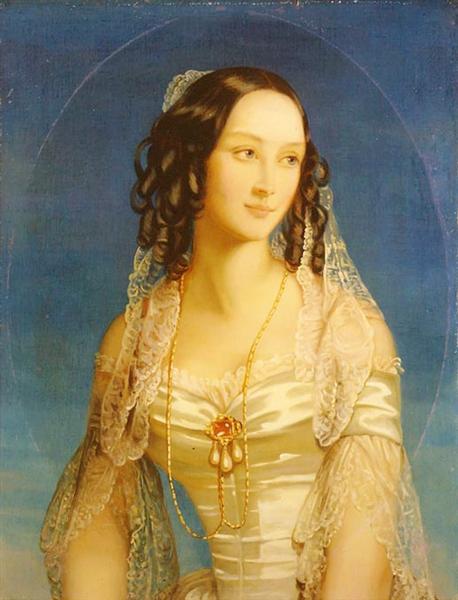
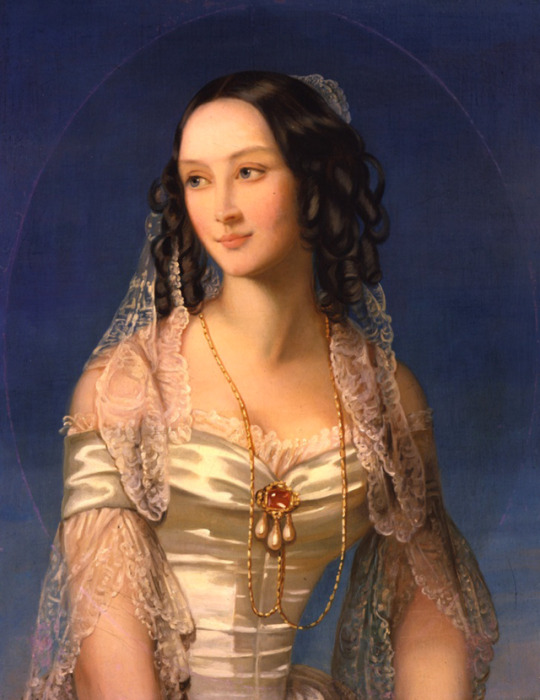

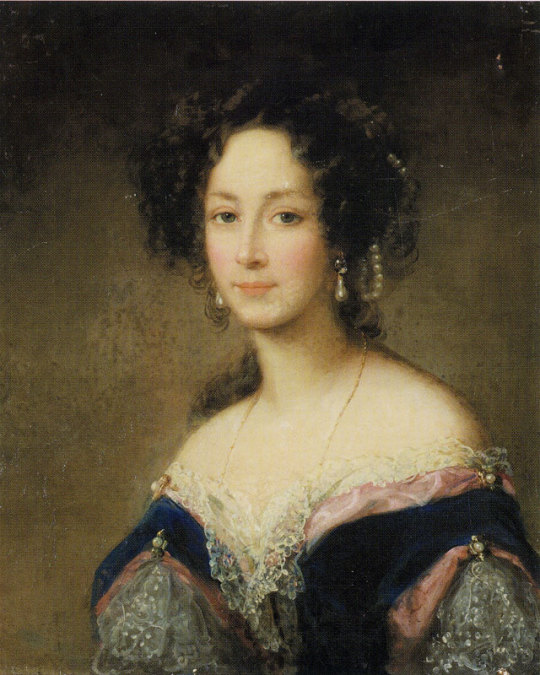
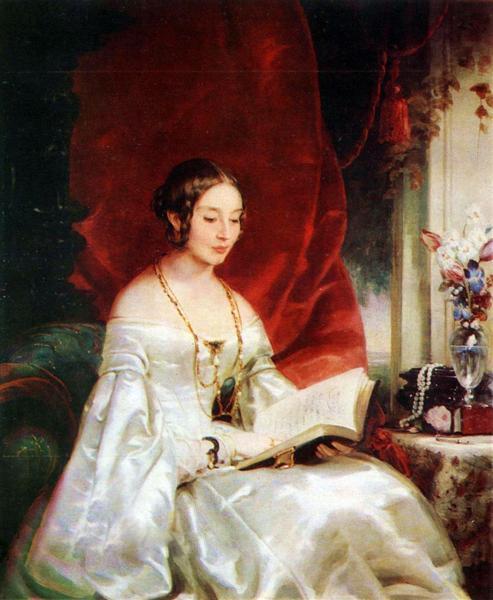

Zinaida Ivanovna Yusupova painted by Christina Robertson
Princess Zinaida Nikolayevna Yusupova (Russian: Зинаи́да Никола́евна Юсу́пова; 2 September 1861 – 24 November 1939) was an Imperial Russian noblewoman, the only heiress of Russia's largest private fortune of her time. Famed for her beauty and the lavishness of her hospitality, she was a leading figure in pre-Revolutionary Russian society. In 1882, she married Count Felix Felixovich Sumarokov-Elston, who served briefly as General Governor of Moscow (1914–1915). Zinaida is best known as the mother of Prince Felix Yusupov, the murderer of Rasputin. She escaped revolutionary Russia and spent her remaining years living in exile.
Zinaida Nikolayevna Yusupova was the only surviving child of Prince Nicholas Borisovich Yusupov (October 12, 1827 – July 31, 1891), Marshal of the Imperial Court, and Countess Tatiana Alexandrovna de Ribeaupierre (June 29, 1828 – January 14, 1879). Prince Yusupov was a patron of the arts, and first served in the chancery of Tsar Nicholas I. Zinaida's mother, a lady-in-waiting to the Empress, was the daughter of Comte Alexandre de Ribeaupierre and his wife Catherine Mikhailovna Potemkina, a niece of Prince Potemkin.
Princess Zinaida's only brother, Prince Boris Nicholaievich Yusupov, died in early childhood. She also had a younger sister, Princess Tatiana Nicholaievna, who died young, in 1888. As the only surviving child of a distinguished, highly placed, and vastly rich couple, Zinaida enjoyed great favor at court. She was the greatest Russian heiress of her day, and the last of her line, the House of Yusupov. The Yusupovs, a family of Crimean Tatars origin, were very wealthy, having acquired their vast fortune generations earlier. Their properties included four palaces in St. Petersburg, three palaces in Moscow, 37 estates in different parts of Russia (Kursk, Voronezh and Poltava). They owned more than 100,000 acres (400 km²) of land and their industries included sugarbeet factories, brick plants, saw-mills, textile and cardboard factories, iron-ore mines, flour mills, distilleries and oil fields on the Caspian Sea.
Prince Nikolai Borisovich Yusupov was hoping that Zinaida would make an illustrious marriage, but at a reception organized to pair her with the Prince of Battenberg, Zinaida met and fell in love with Count Felix Felixovich Sumarokov-Elston (October 5, 1856, Saint Petersburg, Russia - June 10, 1928, Rome, Italy), son of Count Felix Nikolaievich Sumarokov-Elston. Felix was a lieutenant in the Horse Guards. They were married on April 4, 1882 in Saint Petersburg, Russia. Princess Zinaida and her husband had four sons, two of whom survived childhood: Prince Nicholas Felixovich Yusupov (1883–1908) and Prince Felix Felixovich Yusupov (1887–1967). After his father-in-law died, in 1891, Felix was granted special permission by Tsar Alexander III to carry the title Prince Yusupov as well as that of Count Sumarokov-Elston and to pass them both to his and Zinaida's heir. Prince Felix was appointed adjutant to the Grand Duke Sergei Alexandrovich in 1904 and commanded the Cavalry of the Imperial Guards. In 1914 he was appointed Governor General of Moscow, a position he held briefly.
The couple had their own mansion in Liteyny Avenue, where the Institute of Economic Relations, Economics and Law is currently located. She owned the palace at Nevsky Prospect 86 as well.
As a leading figure in pre-Revolutionary Russian society, Zinaida was famed for her beauty, elegance and the lavishness of her hospitality. In her book of memoirs, Ladies of the Russian Court, Meriel Buchanan (1886-1959), daughter of the British ambassador at the Russian court, described Princess Zinaida as: "Delicate in health, easily exhausted, essentially feminine, she was not one of those capable, competent woman, able to run big charitable organizations. She was always ready to give, freely and generously, to anyone who appealed to her, to do what she could to help anyone in distress, to lend her name, her house, her resources for any worthy cause, but she shrank from publicity, from all the complications of executive administration."
Princess Zinaida Yusupova served as lady-in-waiting to both the Empress Maria Feodorovna and later Empress Alexandra Feodorovna and was a close friend to Grand Duchess Elisabeth Feodorovna wife of Grand Duke Sergei Alexandrovich of Russia.[2] In private, she became a severe critic of Empress Alexandra Feodorovna, Grand Duchess Elisabeth's sister. Zinaida's eldest son, Nicholas, age 26, was killed in a duel in 1908, an event which cast a shadow over the rest of her life. In February 1914, Zinaida's younger son, Felix, married Princess Irina Alexandrovna of Russia, Tsar Nicholas II's only niece. Felix fell from grace for participating in the murder of Grigori Rasputin.
Following the Russian Revolution, she lost her vast wealth. She and her husband moved to Rome living under reduced circumstances. After his death she moved to Paris, where she died in 1939.
The Australian conductor Alexander Briger claims descent from her, though it is unlikely.
3 notes
·
View notes
Text
Pavlovichi Edit Emperor Nicholas I (1796-1855) = Princess Charlotte of Prussia (1798-1860) | +-- Emperor Alexander II (1818-1881) = Princess Marie of Hesse (1824-1880) | +-- Grand Duke Paul Alexandrovich (1860-1919) =Princess Alexandra of Greece and Denmark (1870-1891) | +-- Grand Duchess Maria Pavlovna (1890-1958) | = Prince Vilhelm, Duke of Södermanland (1884-1965) | +-- Grand Duke Dmitri Pavlovich (1891-1941) = Audrey Emery (1904-1971) cr. Princess Romanovskaya-Ilyinskaya | +-- Prince Paul Dimitrievich Romanovsky-Ilyinsky (1928-2004) = Mary Prince (b. 1925), ann. = Angelica Kauffman (b. 1932) | +-- Prince Dimitri Pavlovich Romanovsky-Ilyinsky (b. 1954) | = Martha McDowell (b. 1952) | | | +-- Princess Catherine Romanovskaya-Ilyinskaya (b. 1981) | | | +-- Princess Victoria Romanovskaya-Ilyinskaya (b. 1984) | | | +-- Princess Lela Romanovskaya-Ilyinskaya (b. 1986) | +-- Princess Paula Pavlovna Romanovskaya-Ilyinskaya (b. 1956) | = Mark Comisar (b. 1953) | +-- Princess Anna Pavlovna Romanovskaya-Ilyinskaya (b. 1959) | = Robin de Young (b. 1952) div. | = David Wise Glossinger (b. 1953) | +-- Prince Michael Pavlovich Romanovsky-Ilyinsky (b. 1961) = Paula Maier (b. 1965) div. | +- Princess Alexis Mikhailovna Romanovskaya-Ilyinskaya ( b. 1994) = Lisa Schiesler (b. 1973) div = Debra ( ) Lewis
4 notes
·
View notes
Text
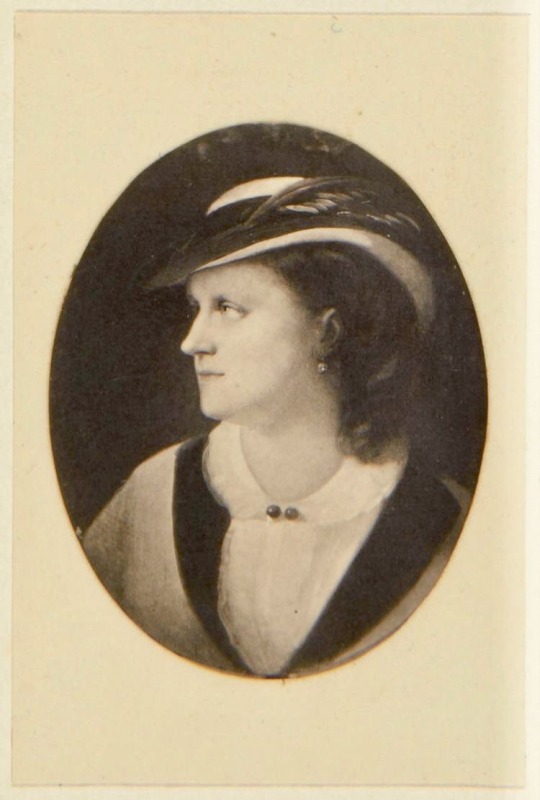
Grand Duchess Catherine Mikhailovna, 1850-60s.
12 notes
·
View notes
Text

Duke Georg August of Mecklenburg-Strelitz (1824-1876) in 1860.
He was born in Neustrelitz as second son of George, Grand Duke of Mecklenburg-Strelitz (1779-1860) and his wife Marie (1796-1880), daughter of Prince Frederick of Hesse-Kassel and Princess Caroline of Nassau-Usingen.
On 16 February 1851 in St. Petersburg, George August married Grand Duchess Catherine Mikhailovna of Russia (1827-1894), daughter of Grand Duke Michael Pavlovich of Russia and had four children.
#duke george august of mecklenburg-strelitz#mecklenburg-strelitz#german royalty#german royal#1860s#1860
16 notes
·
View notes
Text
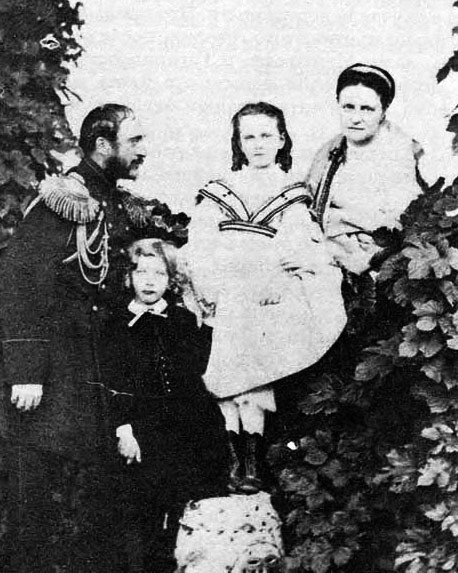

𝐇𝐨𝐰 𝐰𝐞𝐫𝐞 𝐭𝐡𝐞 𝐑𝐨𝐦𝐚𝐧𝐨𝐯𝐬 𝐚𝐧𝐝 𝐭𝐡𝐞𝐢𝐫 𝐬𝐩𝐨𝐮𝐬𝐞𝐬 𝐫𝐞𝐥𝐚𝐭𝐞𝐝: 𝐆𝐫𝐚𝐧𝐝 𝐃𝐮𝐜𝐡𝐞𝐬𝐬 𝐂𝐚𝐭𝐡𝐞𝐫𝐢𝐧𝐞 𝐌𝐢𝐤𝐡𝐚𝐢𝐥𝐨𝐯𝐧𝐚 𝐨𝐟 𝐑𝐮𝐬𝐬𝐢𝐚 & 𝐃𝐮𝐤𝐞 𝐆𝐞𝐨𝐫𝐠 𝐀𝐮𝐠𝐮𝐬𝐭 𝐨𝐟 𝐌𝐞𝐜𝐤𝐥𝐞𝐧𝐛𝐮𝐫𝐠-𝐒𝐭𝐫𝐞𝐥𝐢𝐭𝐳
On 16 February 1851, Grand Duchess Catherine Mikhailovna of Russia married Duke Georg August of Mecklenburg-Strelitz (a first cousin of Queen Louise of Denmark and Princess Mary Adelaide, Duchess of Teck), the second son of the Grand Duke of Mecklenburg Strelitz, in Saint Petersburg. Catherine "loved her husband deeply and selflessly," despite a three-year age gap and the disapproval of her mother. Although the young couple ended up settling in the Mikhailovsky Palace with Elena, she supposedly did not get along very well with Georg. Nevertheless, the marriage produced five children of whom three lived to adulthood.
Catherine and Georg August were first cousins twice removed. Their common ancestor was Charles II, Grand Duke of Mecklenburg-Strelitz.
26 notes
·
View notes
Photo





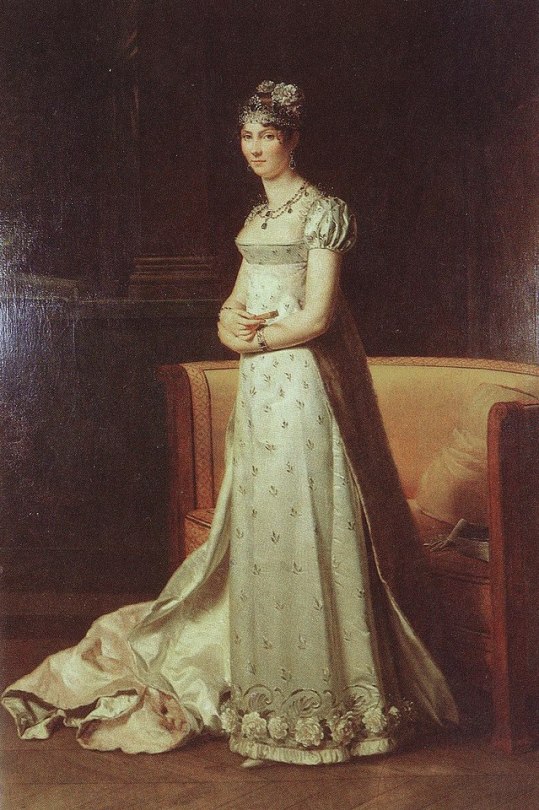
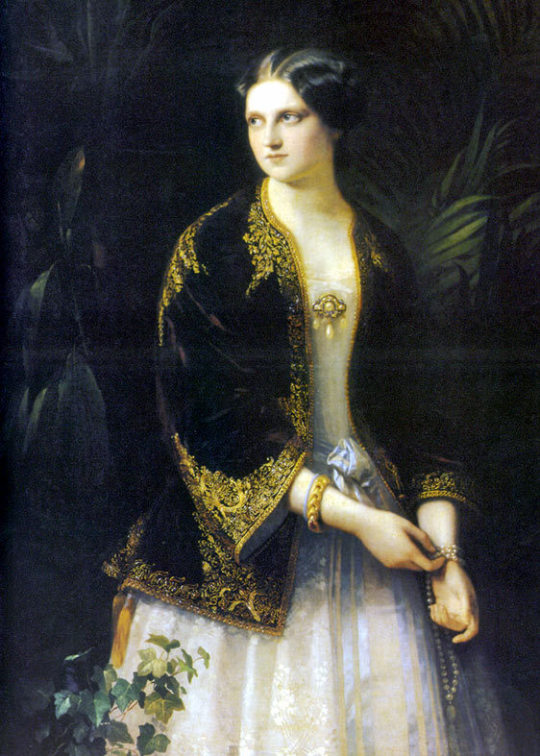



Royal Birthdays for today, August 28th:
Go-Reizei, Emperor of Japan, 1025
Taichang Emperor, Emperor of China, 1582
Louise of Mecklenburg-Güstrow, Queen of Denmark and Norway, 1667
Elisabeth Christine of Brunswick-Wolfenbüttel, Holy Roman Empress, 1691
Charlotte Christine of Brunswick-Lüneburg, Tsarevna of Russia, 1694
Stéphanie de Beauharnais, Grand Duchess of Baden, 1789
Catherine Mikhailovna, Russian Grand Duchess, 1827
Francis, Duke of Teck, 1837
Tatiana, Princess of Greece and Denmark, 1980
Nikolai of Denmark, Count of Monpezat, 1999
#prince nikolai#princess tatiana#catherine mikhailovna#stephanie de beauharnais#Elisabeth Christine of Brunswick-Wolfenbüttel#francis of teck#Charlotte Christine of Brunswick-Lüneburg#Louise of Mecklenburg-Güstrow#Taichang Emperor#emperor Go-Reizei#long live the queue#royal birthdays
16 notes
·
View notes